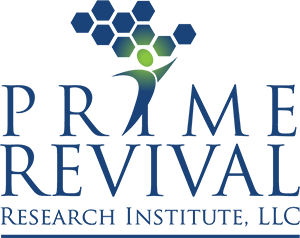Last Updated on August 8, 2023
About the Heart
The heart is a vital organ consisting of four chambers that work synchronously to maintain a continuous flow of oxygenated and deoxygenated blood in and out of the heart. This complex system of chambers, valves, and blood vessels is interdependent on one another for circulating the blood throughout the body and supporting the body’s physiological functions.
Continue reading the blog to understand the difference between systolic vs diastolic heart failure, its diagnosis, and treatment.
What is Heart Failure?
In heart failure, the left ventricle of the heart pumps an insufficient amount of oxygenated blood necessary to meet the body’s needs. Depending on whether the inefficiency occurs during or between the heartbeats, left-sided heart failure can be systolic vs diastolic heart failure. Prime Revival Research Institute is conducting heart failure clinical trials enrolling participants with heart failure symptoms. Participation in clinical trials serves as a gateway to accessing novel therapies.
Symptoms of Left-sided Heart Failure
The left ventricle is the most powerful chamber of the heart. It primarily pumps the oxygenated blood received from the left atrium to the rest of the body through the aorta, the main artery. Left ventricular heart failure is the most common heart failure. In individuals with left-sided heart failure, either can occur — systolic vs diastolic heart failure.
The symptoms of left-sided heart failure vary in severity for every individual and may worsen over time if not addressed early. In a few instances, such as while climbing stairs or walking a few steps, those with systolic vs diastolic left ventricular heart failure may experience some of the symptoms mentioned below.
- Dyspnea or trouble breathing: Changes in breathing patterns are the most predominant sign in individuals with heart failure, manifested at rest, during physical activity, or lying down. It may also cause disturbed sleep patterns.
- Fatigue and weakness: Inadequate blood flow pumped to the body’s organs and muscles can cause generalized fatigue and weakness.
- Persistent clear or frothy cough with wheezing: Blood backing up into the lungs can lead to fluid accumulation, causing a persistent cough that may produce frothy or pink-tinged sputum. Wheezing can also occur.
- Swelling (edema): Fluid accumulation in the body’s tissues can lead to swelling, especially in the legs, ankles, feet, or stomach.
- Sudden weight fluctuation: Fluid retention can cause a sudden and noticeable weight gain in individuals with heart failure. (1).
- Altered consciousness or confusion: In severe cases, reduced blood flow to the brain can confuse or even alter consciousness.
However, in the early stages of heart failure, systolic vs diastolic, the symptoms do not present.
Systolic Vs Diastolic Heart Failure
When diagnosing heart failure, systolic vs diastolic, doctors use some of the many tests to look closely at the pumping efficiency of the heart and or the ejection fraction. The heart’s ejection fraction measures the blood volume the left ventricle pumps out each time it contracts. According to American Heart Association (AHA), the average ejection fraction of a heart falls between 50% and 70%. (2)
Systolic Heart Failure
Systolic heart failure is also known as “heart failure with reduced ejection fraction” (HFrEF). Those with HFrEF may have an ejection fraction of less than 40%. Physiologically, during the systole phase, the heart contracts to push the oxygenated blood out and about the body. While in systolic heart failure, the left ventricle weakens or enlarges. Consequently, the heart then contracts inefficiently during each heartbeat.
Diastolic Heart Failure
Diastolic heart failure most often affects older people and more females than males. High blood pressure, also called hypertension, is a major risk factor for diastolic heart failure. An alternative name for diastolic heart failure is “heart failure with preserved ejection fraction” (HFpEF). Besides, those with diastolic heart failure may have a normal ejection fraction.
During the diastole phase of the heart, the heart relaxes between the beats, allowing the blood to fill in. Diastolic heart failure happens when the left ventricle becomes stiff or thick and loses its ability to relax properly during the resting phase of the heartbeat. The thickening of ventricular muscles reduces the heart’s capacity to hold blood. Also, the stiffness reduces blood volume pumped out during each heartbeat. In terms of ejection fraction, the heart’s ability to pump is near normal but the filling of the ventricle is impaired. Hence, the name preserved ejection fraction.
Also, read: Hypertension & High Diastolic Blood Pressure
Diagnosis of Systolic vs Diastolic Heart Failure
Heart failure diagnosis requires medical history evaluation, physical examination, diagnostic tests, and imaging. Thus, an early diagnosis and intervention are crucial to managing systolic vs diastolic heart failure.
- Echocardiogram (EKG)
- Transthoracic echocardiogram (TTE)
- Cardiac computed tomography (CCT) scan
- Blood tests, such as natriuretic peptide tests
- Electrolyte panel
- Cardiac catheterization
Pharmacological Treatment of Heart Failure
The treatment of systolic vs diastolic heart failure depends on the severity of every case. Potential pharmacological drugs used for treating systolic heart failure are:
- Beta-blockers (BBs)
- Angiotensin receptor-neprilysin inhibitors (ARNI)
- Angiotensin-converting enzyme (ACE) inhibitors
- Angiotensin receptor blockers (ARBs)
- Mineralocorticoid receptor antagonists (MRAs)
- Sodium-glucose co-transporter 2 (SGLT2) inhibitors
- Diuretics
- Digoxin
- Hydralazine
- Isosorbide dinitrate
The medications used for treating diastolic heart failure could be the same as those required to treat systolic heart failure. The focused approaches to treating diastolic heart failure are:
- Diuretics: Used to get rid of excess fluid buildup.
- ACE inhibitors: These medications work by relaxing the blood vessels, which eventually lowers high blood pressure levels. ACE inhibitors are potentially favorable drugs for treating diastolic heart failure.
- SGLT2 inhibitors: These are other potentially favorable drugs used to treat diastolic heart failure.
About Prime Revival’s Heart Failure Research Study
Prime Revival Research Institute is conducting a clinical trial to evaluate the safety and efficacy of a study drug in people with heart failure, who are on stable, guideline-directed medical therapy for HF. The study consists of a 4-week screening period, a 12-week double-blind treatment period, and a 4-week follow-up.
You may be eligible to participate if you:
- Are a male or female between 30-85 years
- Have been diagnosed with heart failure (HF) with reduced left ventricular ejection fraction (LVEF)
- Are on a stable dose of renin-angiotensin-aldosterone system (RAAS) or β-blockers for >4 weeks
Conclusion
In conclusion, systolic (HFrEF) vs diastolic heart failure (HFpEF), is a severe medical condition. Fortunately, it may be effectively managed with several treatment options. These treatment approaches encompass medications, lifestyle modifications, implanted devices, surgical interventions, and, in some cases, heart transplantation. All treatment modalities focus on improving heart function, reducing blood pressure, and avoiding fluid retention.


